Harriett Chapman has a lifelong interest in objects, places, their connections and memories. These are the things that inspire her colourful textile works. In each piece, she pays expert attention to shape, colour and pattern
Selecting a treasured possession, Harriett simplifies its shape to form a template, ready to use in her collages of plain and patterned fabrics. She chooses her colour schemes with great care, and she likes to make them bold, but also balanced. The result is sublime; you’ll agree the fabric combinations really do sing.
She enhances her designs with stitch, using contrasting and complementary threads to add detail or make shapes recede into the background. Often she uses the leftover fabric from her cut out shapes, and this brings an exciting abstract element to her work. This stems from her love of Matisse and his “painting with scissors” style.
The objects that most inspire Harriett are things that have history, connections or an emotional link. You’ll love her work “The cottage” which she made around the same time her daughter left home for university. This is a piece depicting precious memories of Harriett’s old family home.
Find out how Harriett uses colour and shape, and how a treasured object can inspire beautiful textile works that record a personal story.
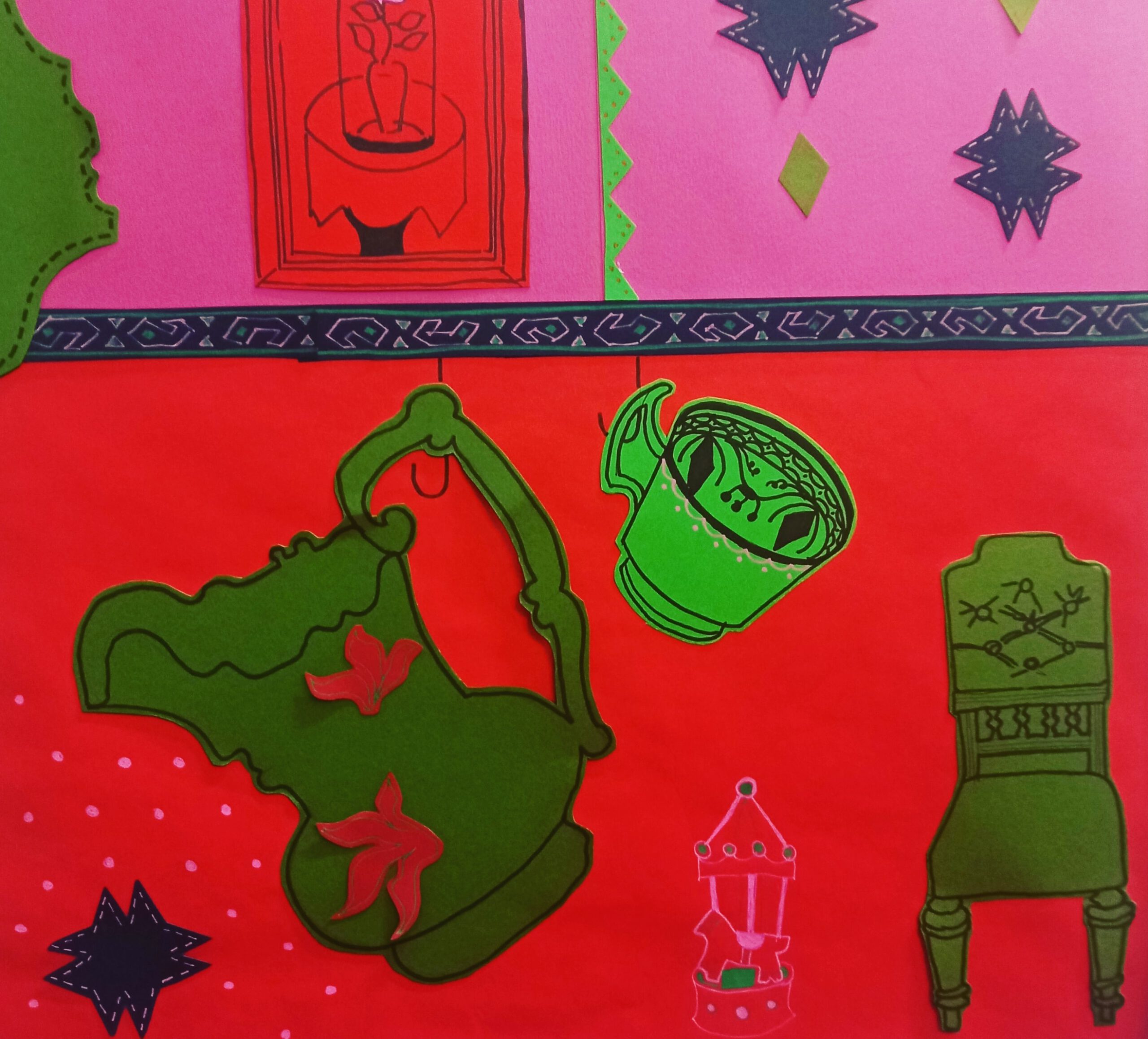
The treasure chest
TextileArtist.org: What or who were your early influences and how has your life/upbringing influenced your work?
My father was a painter and a lecturer in Fine Art at Camberwell School of Art, amongst other universities. He worked away from home all week during term time and came home at the weekends. My parents used to invite friends from London to come and stay with us in the summer holidays; they were mostly students taught by my father, who had become friends. This was very exciting for me.
Some of these people ended up buying houses in the area, including Helen Messenger, a lovely lady who became a textiles lecturer at Hornsey College of Art. One summer Helen made me a dress using my mother’s old treadle Singer sewing machine. I was very impressed with it and this is where my love of textiles began.
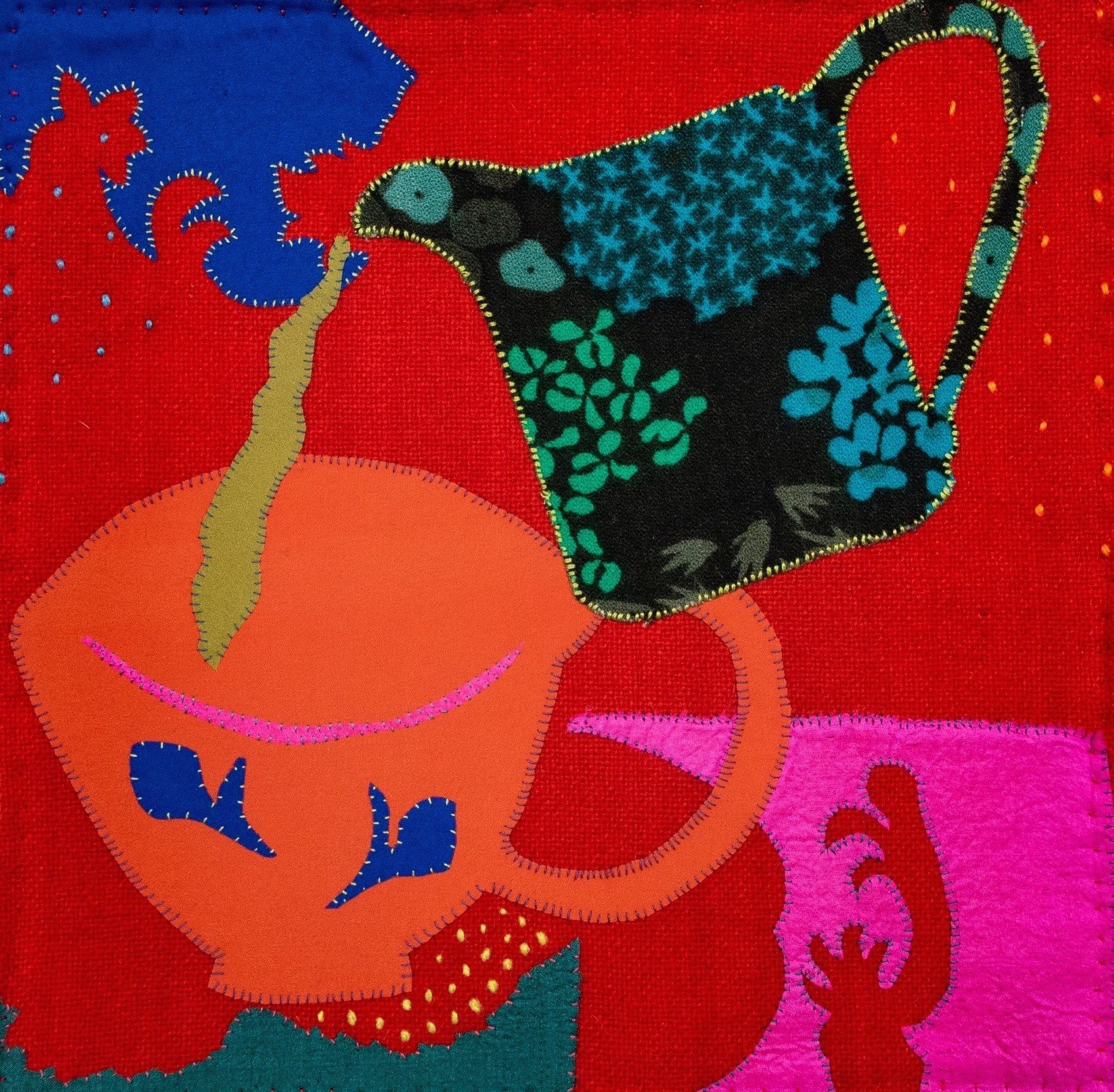
What initially attracted you to textiles as a medium? How was your imagination captured?
I became fascinated with textiles because my mother, who was an antiques dealer and a painter, had all sorts of collections, from ceramics, ship paintings, wooden spoons and lots of beautiful textiles.
As a child, I used to go along with her to auctions in Wales where she would bid for all her treasures. She used to have a couple of antique chests of drawers in her bedroom, bursting full of beautiful fabrics. When there was nothing to do at home, I often used to go upstairs, open the drawers and explore all the fabrics.
I learned to sew when I was around ten, but didn’t really have the patience for it. It wasn’t until I was in my thirties when I was studying, that I realised working with textiles could be something I could take forward and use to make a career for myself.
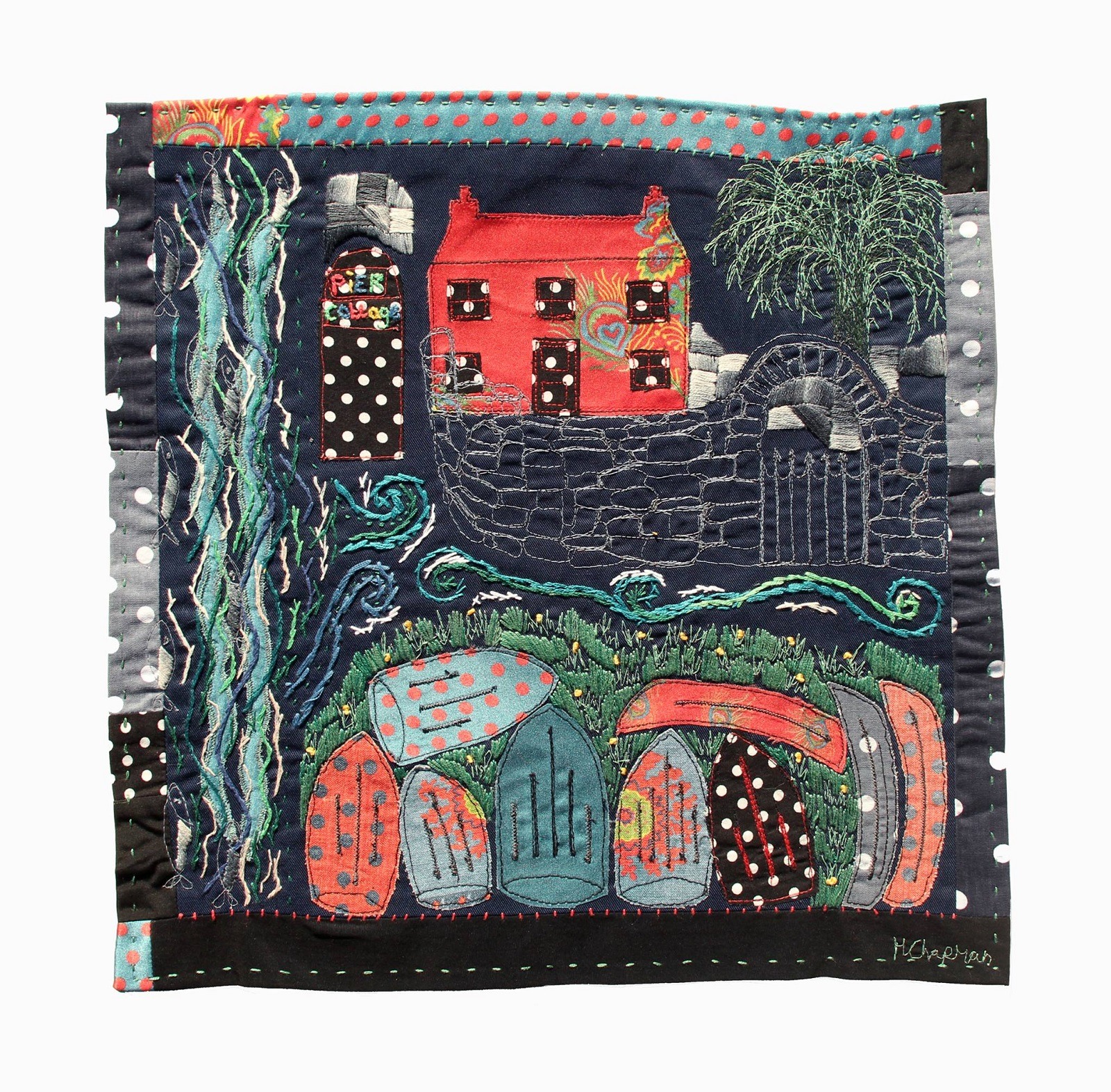
What was your route to becoming an artist?
Having already tried out two different courses earlier in life, in my thirties I enrolled at the London College of Printing. This is where I really started to engage with my work and it reminded me of my love of textiles.
I spent a few years bringing up my daughter and after that, I returned to education to study for a BA in Surface Pattern Design at Swansea College of Art. The course gave me the skills I needed to start selling my work. I began to make items including purses, bags and scarves using my designs digitally printed on fabric.
At the end of the course I was selected to attend the New Designers show and I was invited to attend The Quilt Show at Birmingham. This led me to sell my work at galleries in London and Brighton. Also, I curated an exhibition at the Makers Guild of Wales, Cardiff, of which I have been a member for several years.
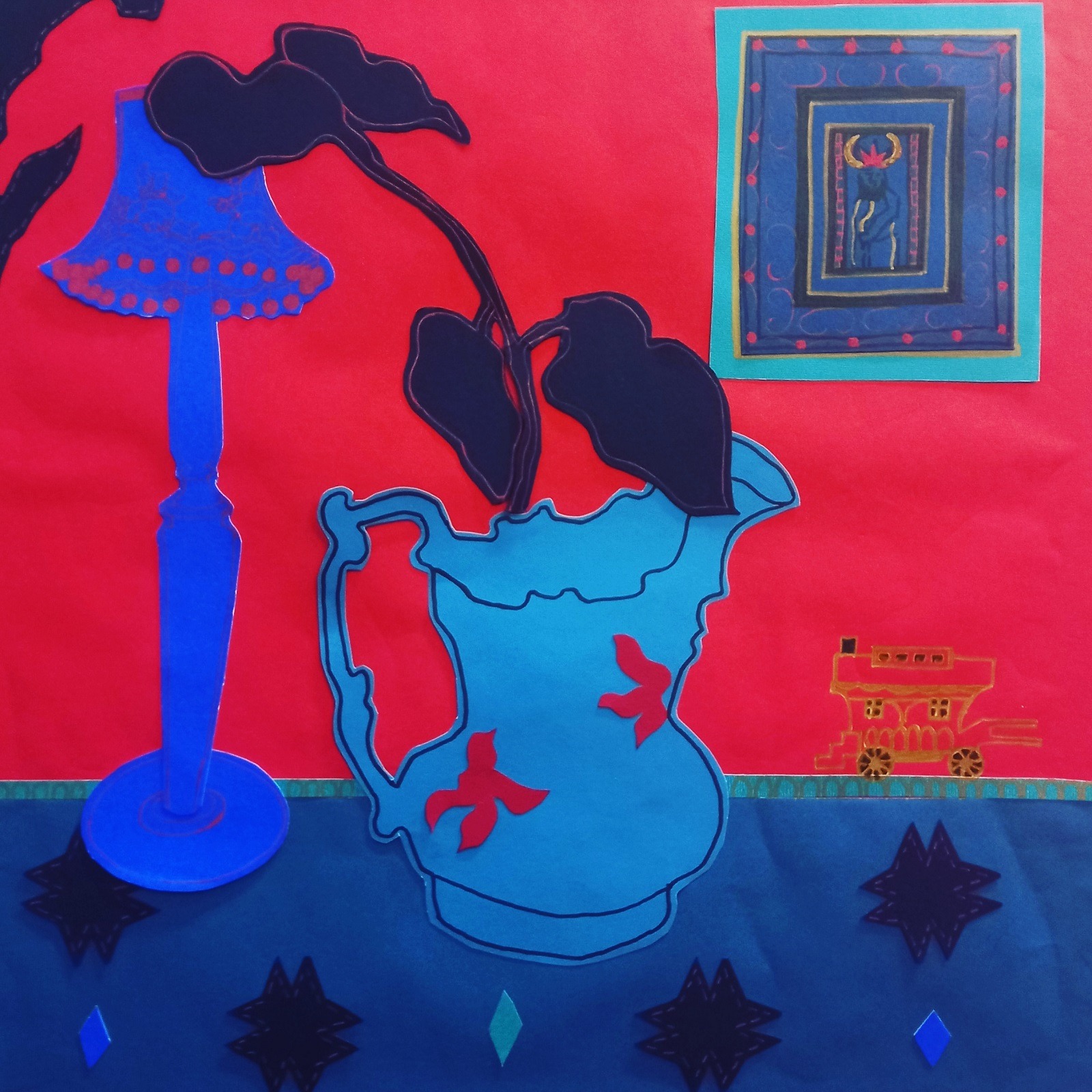
Objects and associations
Tell us about the work you make
I am interested in the history of objects and the familiarity I feel when I look at them. Objects and possessions represent a connection to people, places and a specific time. Many of my belongings hold family associations, having an individual narrative linking to memory, meaning and emotion.
Pattern, colour and shape are central to my work. I assemble together ideas from still life arrangements, photographs and found images, piecing them together to create a colourful composition. I also paint, as well as making textiles and paper collages. This helps me to explore my subject and I find that the works feed into one another.
When I have chosen my colour palette, I decide on the shapes for the composition. Then I assemble the cut-out pieces before ironing them onto a backing fabric. Stitching is used to highlight a shape or subtly help a shape sit within the background.
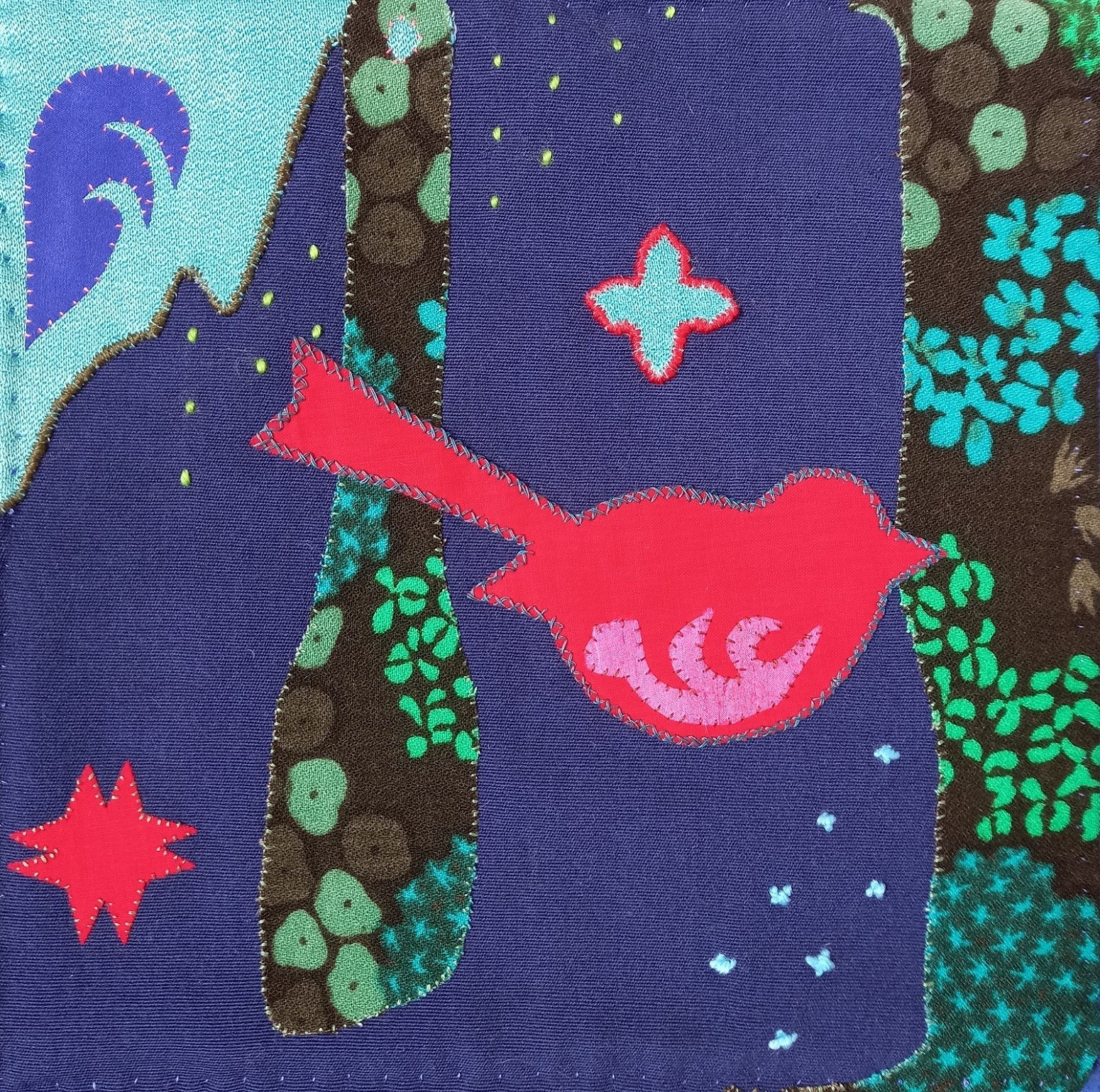
Tell us more about your chosen techniques and how you use them
I use fabrics sourced from charity shops as well as my collection of handed down materials. I really appreciate the delicate nature of the fibres and the shiny textures of silks and satins, and I have recently been using wool as a backing fabric.
To strengthen the fabrics and make it easier to cut out the shapes, I use Bondaweb (a paper-backed iron-on adhesive). I simplify the shapes referenced from my source objects and often use leftover pieces from the cutting stage that might normally be overlooked.
I enjoy using vivid, bold colours. Complimentary colours really help to make the fabric combinations sing. For stitching, I prefer to use a simple horizontal running stitch using threads in contrasting colours to add a succession of drawn lines and enhance the work.
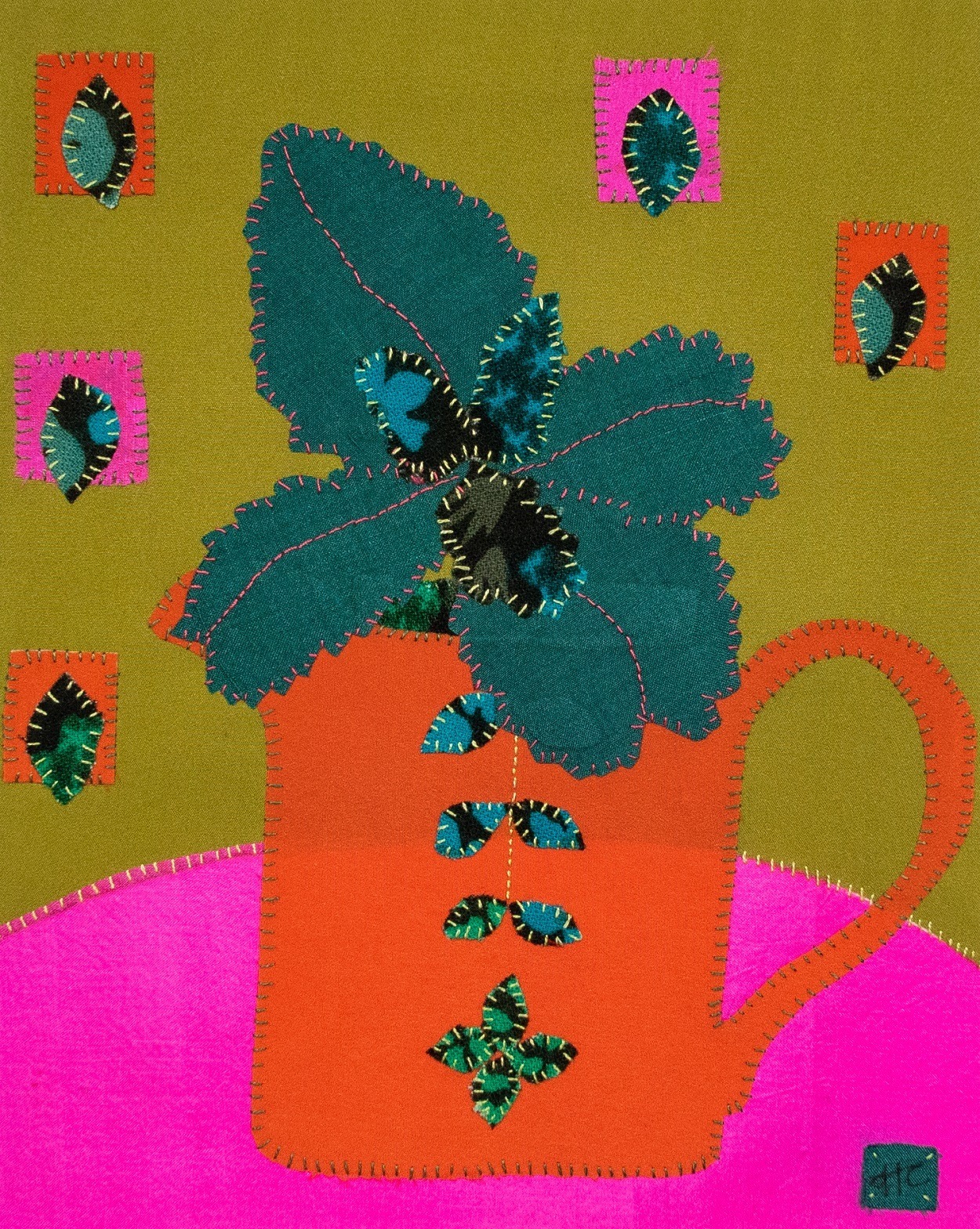
What/who currently inspires you?
I have always been inspired by Henri Matisse. His work has such a simplified, relaxed quality. He was part of the Fauvism movement and he liked to use colour, rather than shading, to make volume and structure in his work. In the first lockdown, I found an online workshop where we cut out shapes in a Matisse style. This really inspired a new way of working in textiles for me.
Alfred Wallis is another artist that inspires me. His compositions have a primitive, humble quality. In his work, the perspective sometimes seems as if he is looking down on a scene.
Another artist that I admire is Julia Griffiths Jones. I like to look at work that tells a story, and her subject matter of Eastern European folk art really excites me. We share a common interest of women in their domestic roles, expressing their personal stories of their lives through quilts and samplers.

The cottage
Tell us about a piece of your work that holds particularly fond memories and why?
My work “The cottage” was a piece that I made when my daughter was going off to university and I felt inspired for the first time in a while. I was living in Swansea and thinking about moving back to West Wales. I used to visit this cottage often and I have many happy memories of living there. It was called “Abermydyr“, and was the coach house for the mansion at Llanerchaeron, near Aberaeron. Both houses are now owned by the National Trust.
Whilst travelling around Wales I used to see Red Kites swooping. They have always been special birds to me. They were re-introduced into the area in the Eighties, and at my father’s funeral, I remember Red Kites were flying overhead.
The cottage was the last house my mother and father owned. It was situated in a beautiful spot where two rivers meet at the end of the garden and there was an immense London Plane tree taking the whole of one of the gardens. This piece includes all of these significant parts of my memories; the tree, the cottage and the Red Kites.
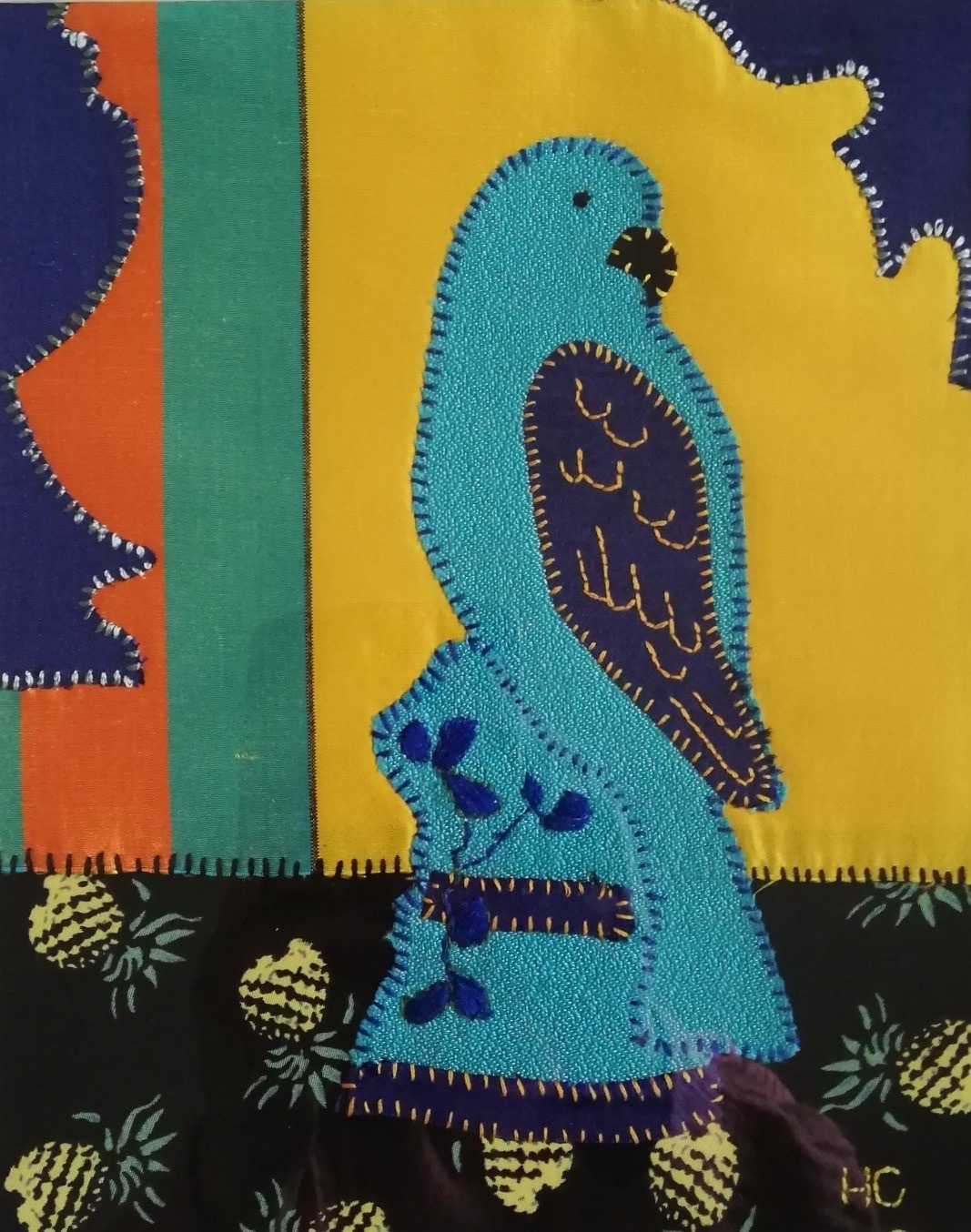
How has your work developed since you began and how do you see it evolving in the future?
At the beginning of my career, I focused on designing my own fabrics and making them into products. In the last five years, I have moved away from making products into creating one-off, fine art pieces.
I have used lots of techniques including screen printing, incorporating foiling papers and painting directly onto cloth. All of my work includes stitch. I paint and make collages to inform my textile work. Using a range of different processes excites me and I want to find new ways of using these techniques to help engage with my subject matter.
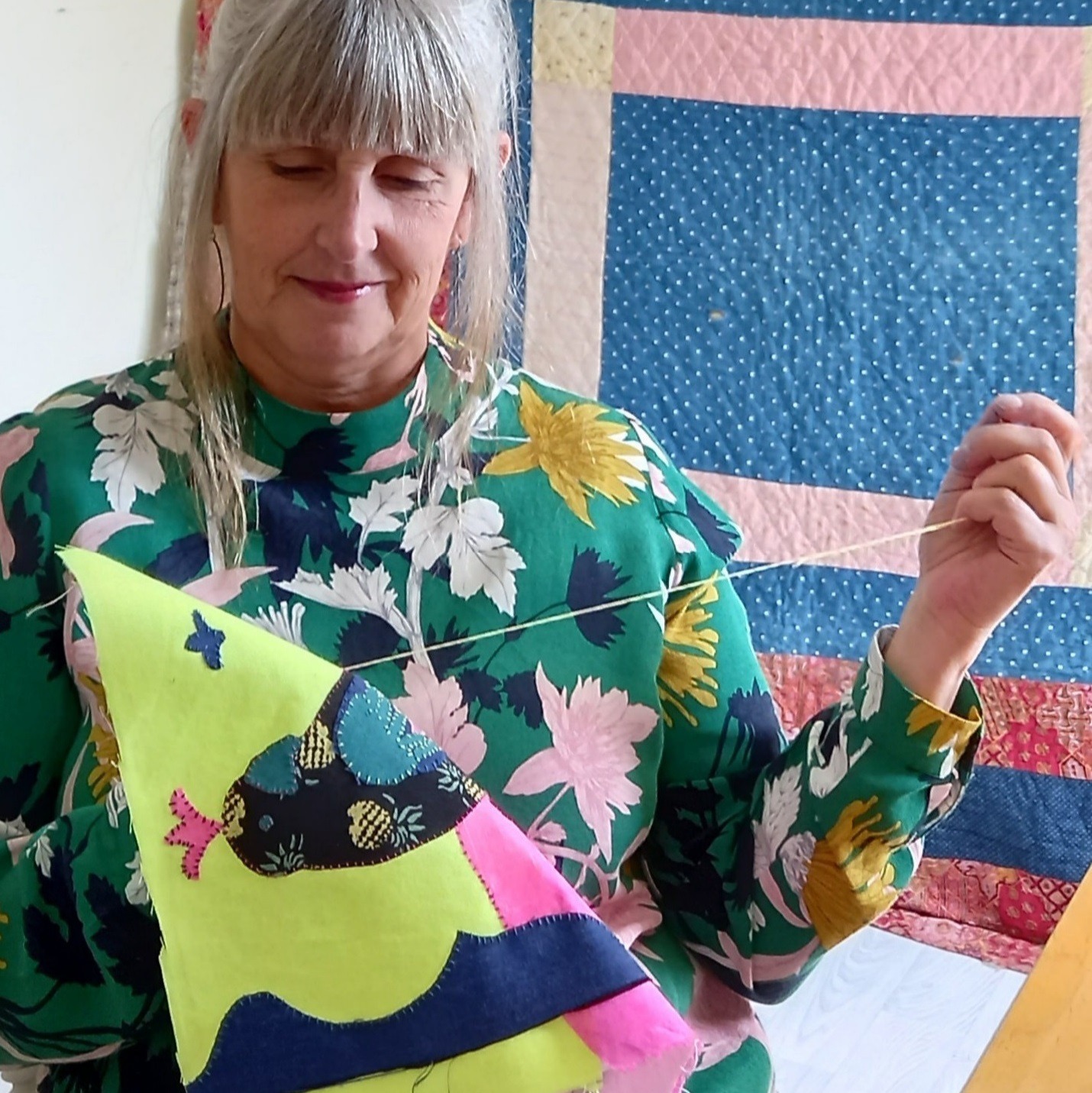
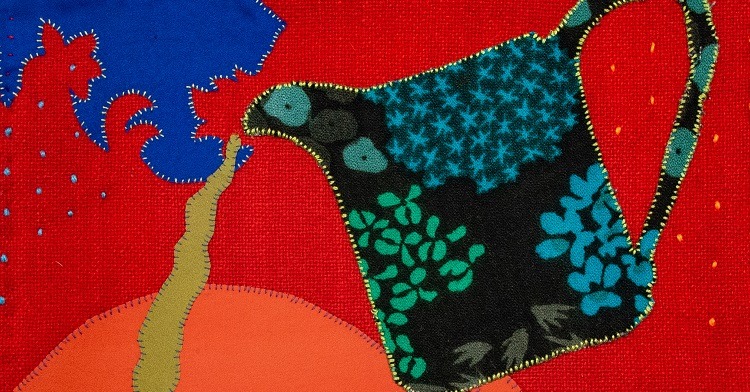

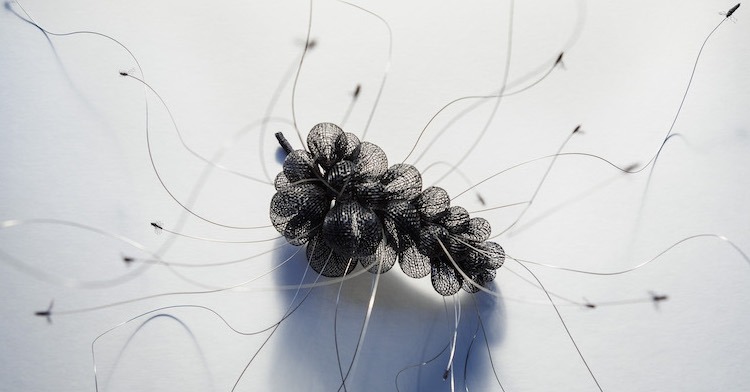
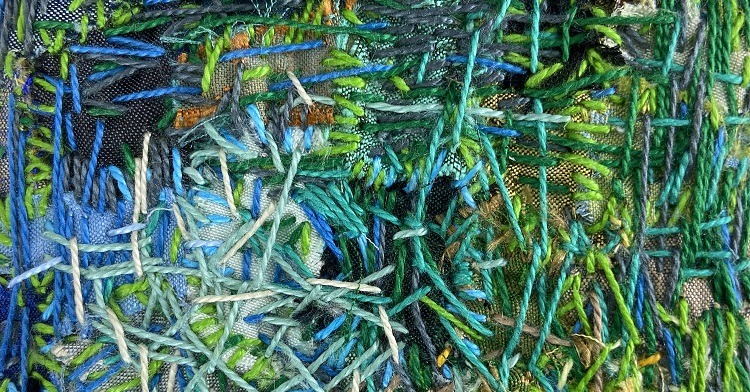
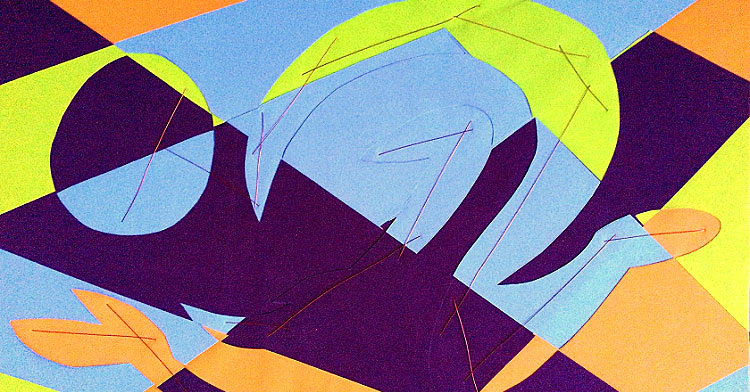
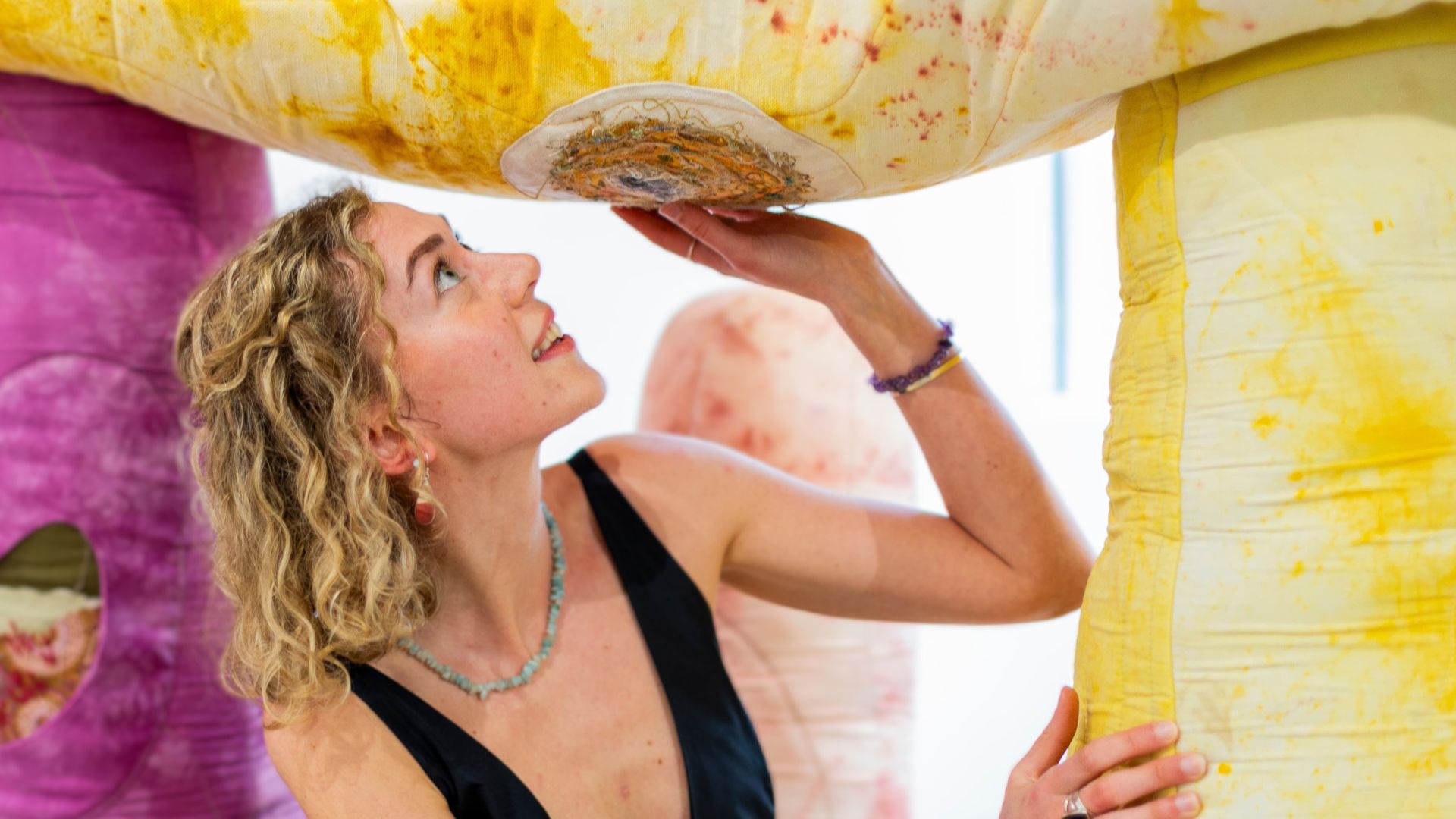
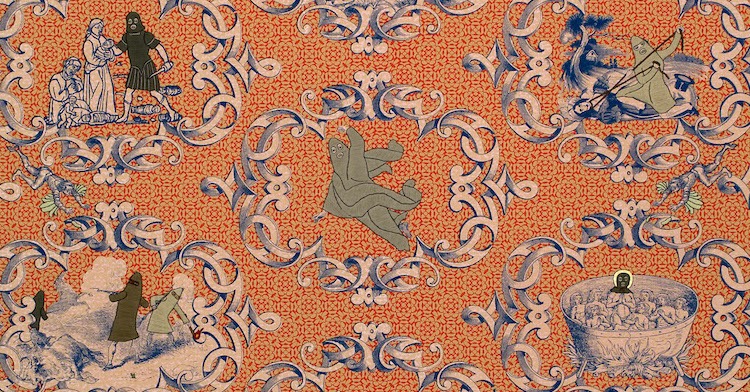
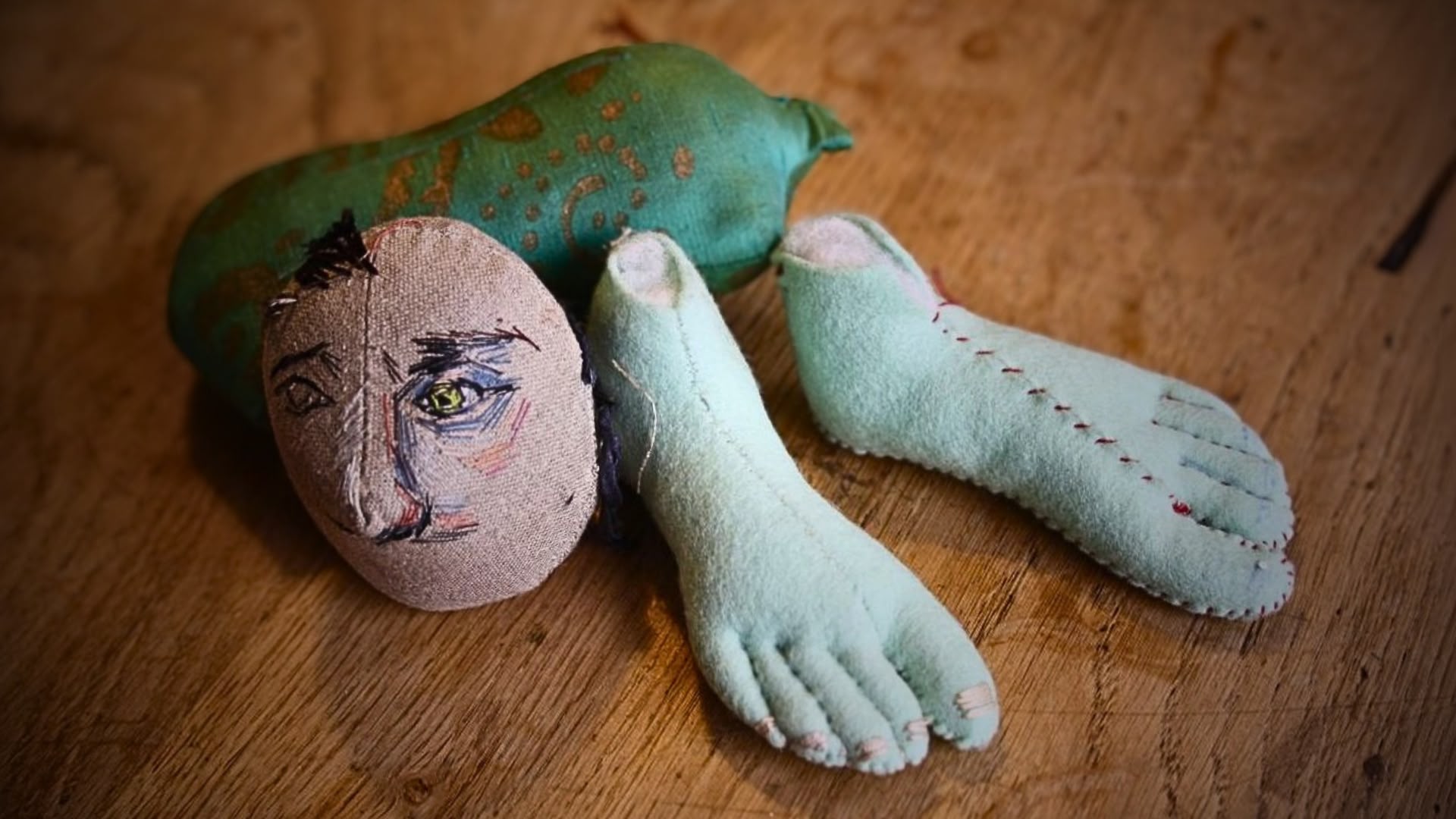
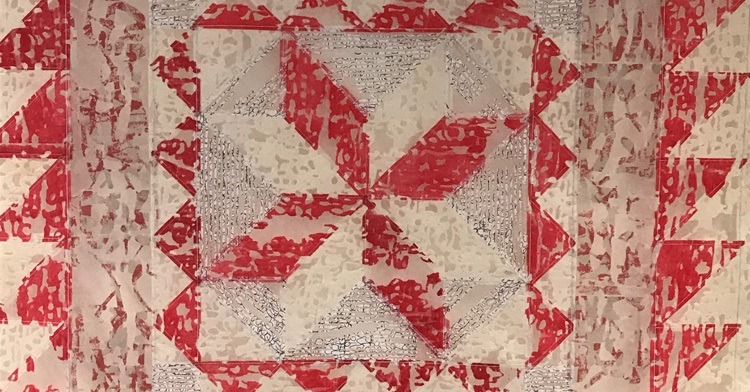
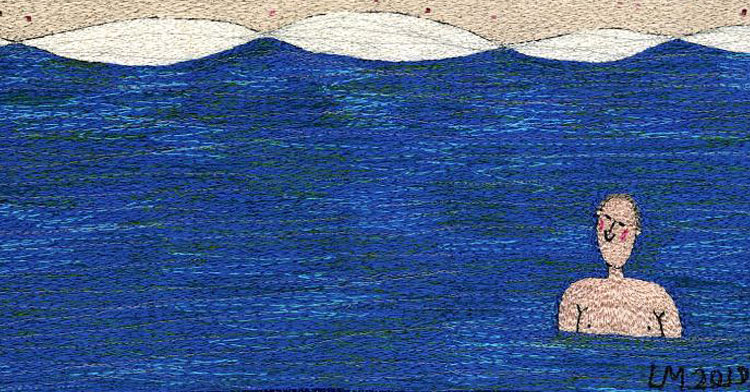
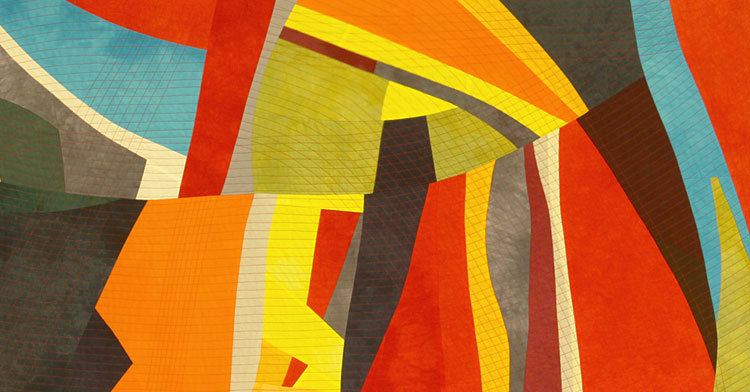
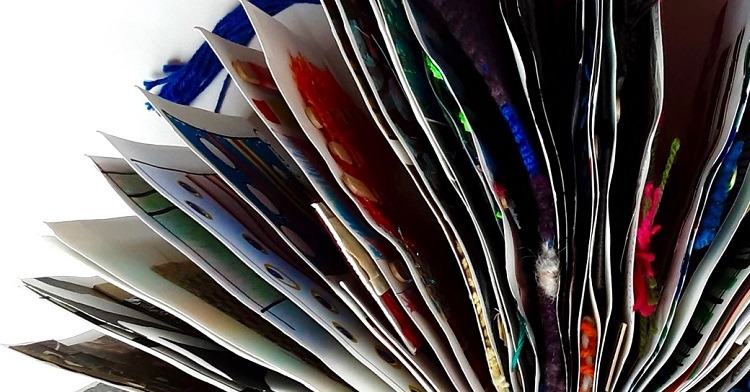
7 comments
Ann Evans
I enjoy being a part of Harriets Textile Group, where I am inspired by her work and knowledge. Harriet is a beautiful person who produces beautiful work.
Susan
I’m inspired by the purity of design in Harriet Chapman’s work. I took photos of a treasured bowl that I broke and want to use them as reference for planning a textile collage.
Harriett Chapman
Thankyou for the kind comments. I do not have my own online workshop as of yet, but something I would like to do in the future.
Mary Lee
I would love to take the online course that you mentioned taking during lockdown. Would you be willing to share that information?
Are you offering any online classes on the Matisse collage techniques?
Thank you,
Mary Lee
Lexington, Ky
US
Gill Wild
Such vibrant work, I’m looking through my stash already. A few years ago I bought a small bowl in the most wonderful turquoise from a potter recommended by a close friend. The potter had just bought a studio on the Isle of Wight where my son and family had recently relocated. I was missing him and any sort of connection was welcomed. A few months later the bowl was dropped and broken. Superglue stuck it together but didn’t help aesthetically! The following Xmas my children clubbed together to buy me a larger bowl and matching jug. A real surprise and very precious to me. Also a wonderful colour for translating into textile art.
Margot
A lovely read, beautiful work, very inspiring, thank you
rose
lovely colour choices